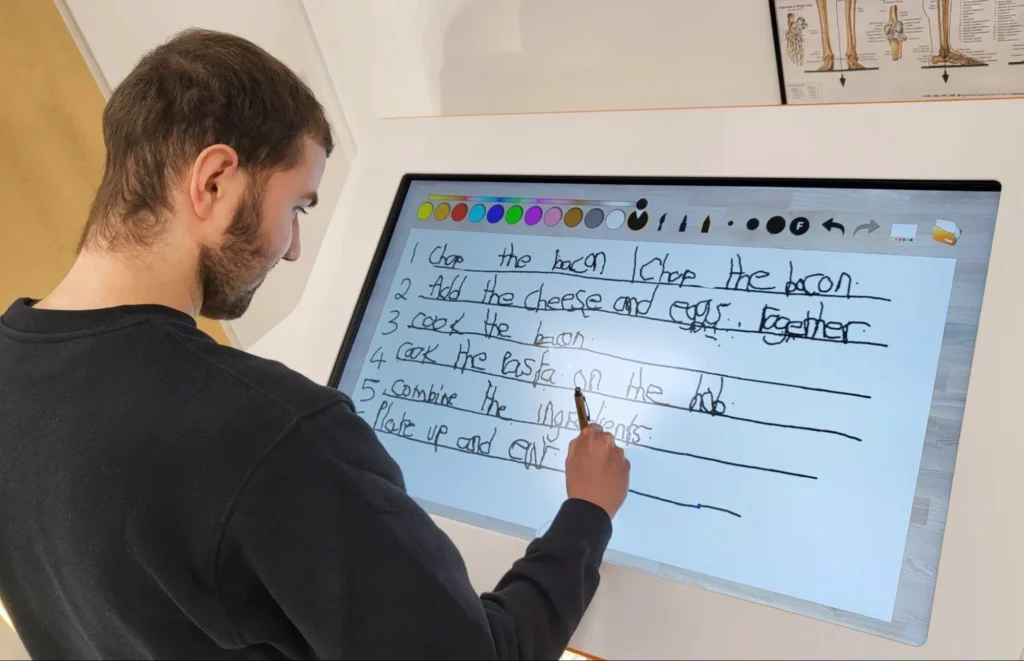
22-year-old male presenting with coordination difficulties impacting his walking, balance and daily tasks involving his right arm. The medulloblastoma was surgically removed with subsequent radio and chemotherapy treatments. At the time of diagnosis, he was studying Law with Criminology at Swansea University and is due to return soon to finish his degree. He is a keen sportsman and enjoys playing football, golf and mountain biking. He supports Chelsea FC and enjoys cooking.
• Reduced dynamic balance
• Visual dominance for balance
• Ataxic gait
• Reduced fine motor control and dexterity in right upper limb
• Impaired coordination throughout right hand side
• Double vision in peripheral field
• Reduced self efficacy
• Independent mobility indoors wide compensated gait pattern
• Predominantly housebound, supervised for balance when going outside
• Requires rail when completing stairs
• Slow and effortful writing and typing skills
• Independent with self-care and starting some cooking at home under guidance from family
Intensive rehabilitation package of physiotherapy and occupational therapy.
Physiotherapy:
• Balance rehabilitation with use of neurotechnology (TYMO) for visual feedback, alongside use of different surfaces and incorporation of vestibular rehabilitation
• Lower limb and core strengthening programme with use of neurotechnology to optimise trunk stability and improve overall gait pattern (OMEGO)
• Stairs practice and gait training on different terrains and under different conditions (speed, head turns)
Occupational Therapy:
• Handwriting retraining with use of neurotechnology (MYRO) to allow different body postures and letter formation sizes, alongside timed trials of copying text from a Chelsea FC news article
• Graded training and exposure to kitchen tasks building towards overall goal of cooking carbonara
• Community reintegration, through supported visits to shops and outdoor activities including return to football
• Confidence building, through exposure to different tasks and debriefing
• Cooking at home for family every Friday
• Quicker speed and improved control with handwriting
• Able to complete the stairs without use of a handrail, although remains hesitant on the descent
• Integrating back into the community with greater confidence and self-efficacy, visiting the town centre and going to local shops by self
Intensive rehabilitation is recognised as the best approach, and with the expert staff and technology available at Hobbs, this helps with securing improvements towards the required outcomes